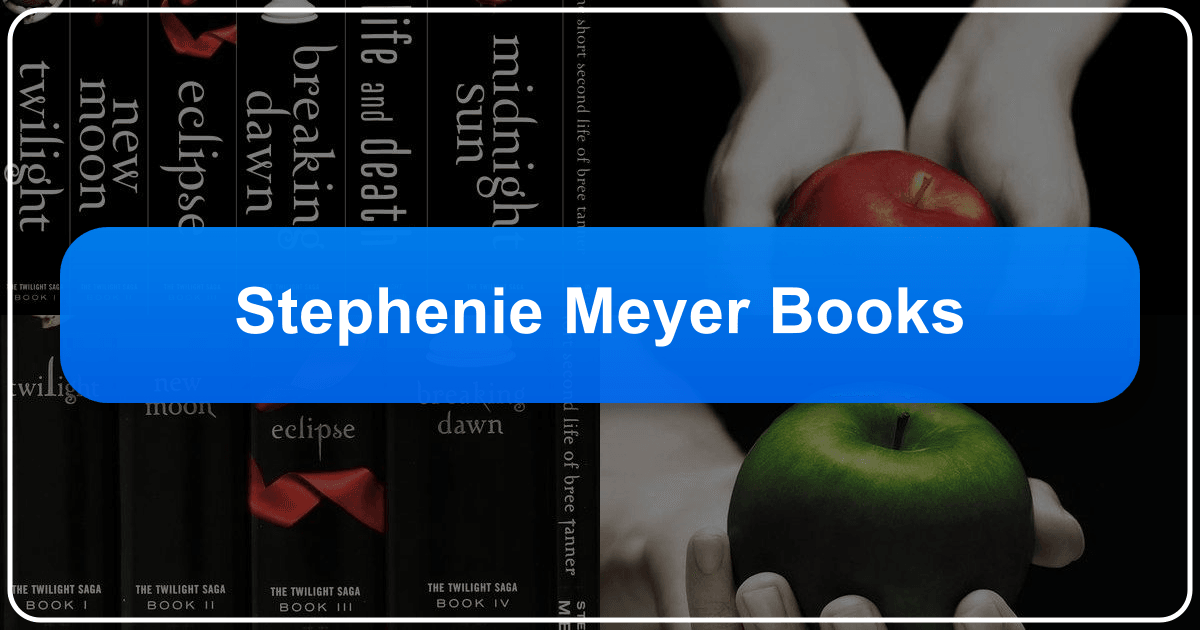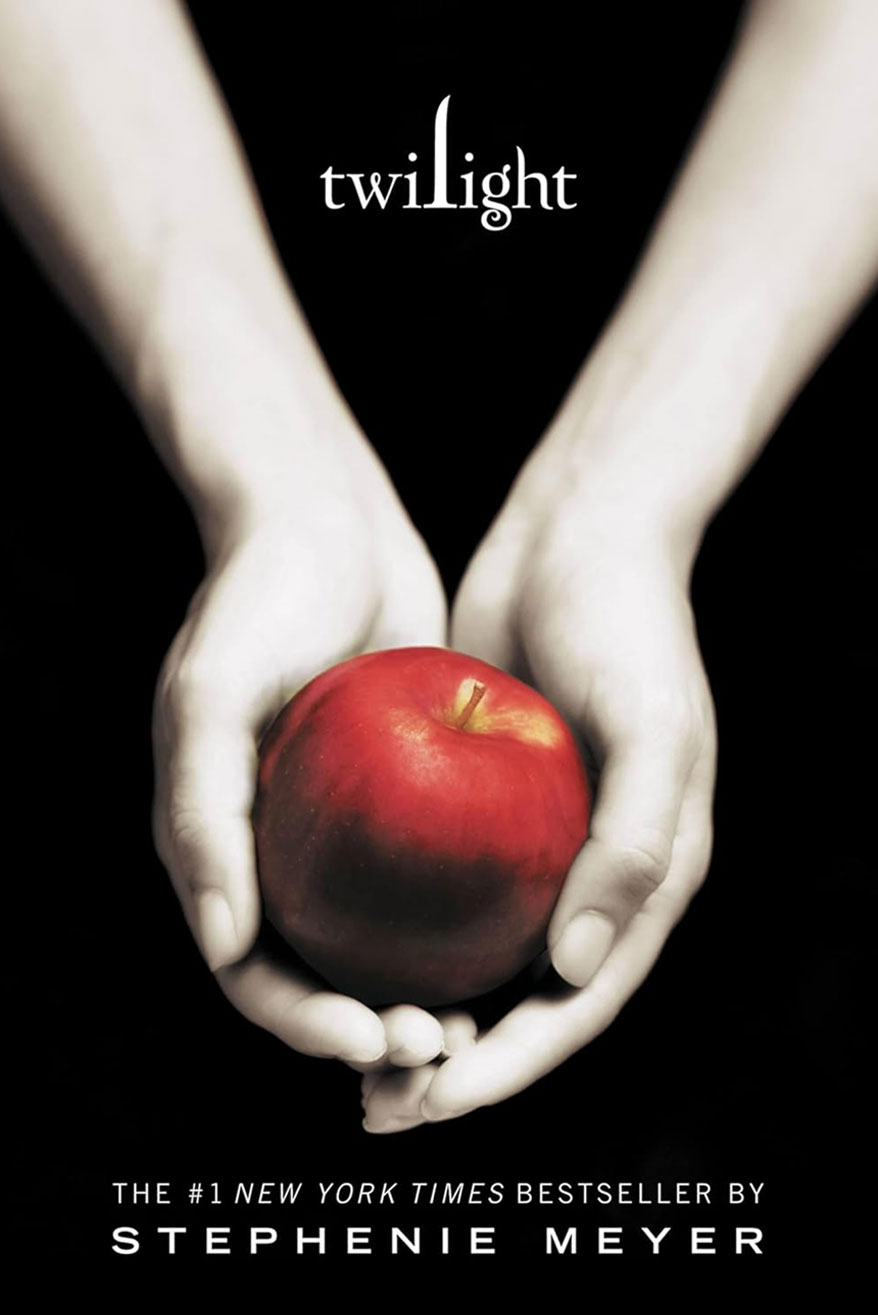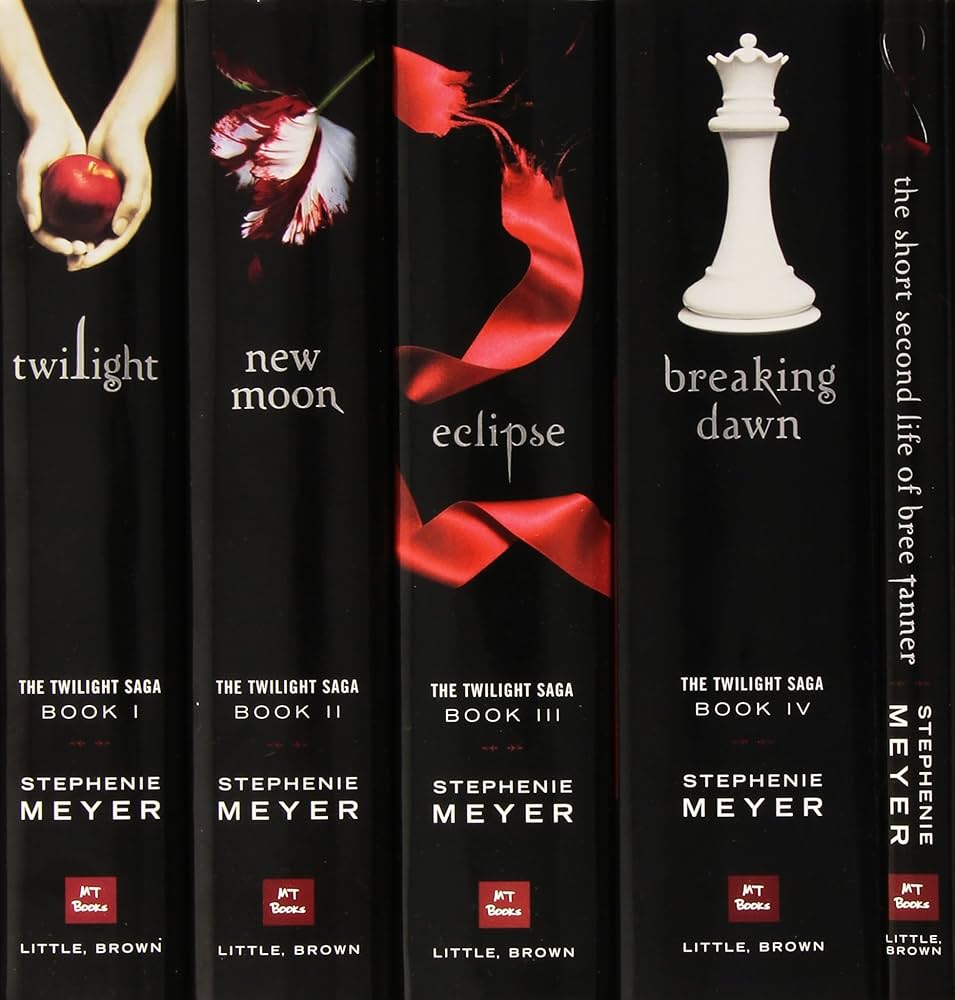Stephenie Meyer Books: A Comprehensive Exploration

Stephenie Meyer’s Twilight saga has transcended the boundaries of young adult fiction, becoming a global phenomenon with a significant cultural impact. This exploration delves into the various facets of Meyer’s literary contributions, examining her books, writing style, inspirations, and the wider influence her work has had on literature, film, and popular culture. We’ll also touch upon the evolving critical reception of her work and its enduring appeal.
The Twilight Saga and Beyond: A Genre-Defining Body of Work
Stephenie Meyer’s primary claim to fame is undoubtedly the Twilight series, a five-book paranormal romance saga that captivated millions worldwide. The series follows the intense and often turbulent relationship between Bella Swan, a human teenager, and Edward Cullen, a centuries-old vampire. The books blend elements of romance, fantasy, and horror, creating a unique narrative that resonated deeply with a primarily young female audience. The series’ success sparked a significant shift in the young adult literature landscape, paving the way for similar paranormal romance novels and contributing significantly to the rise of the “paranormal romance” subgenre.

Beyond the Twilight saga, Meyer has authored other novels, including The Host, a science fiction romance exploring themes of identity and alien invasion. While not achieving the same level of global recognition as Twilight, The Host further showcases Meyer’s talent for crafting compelling female protagonists and exploring complex emotional relationships within imaginative settings. Her writing consistently features strong female leads navigating difficult choices and navigating challenging romantic entanglements. Her works frequently incorporate elements of self-discovery and the struggle between personal desires and societal expectations.
Furthermore, Meyer has expanded the Twilight universe with companion novels and novellas, providing additional perspectives and enriching the existing narrative. Midnight Sun, for instance, retells the events of Twilight from Edward’s point of view, offering readers a deeper understanding of his internal struggles and motivations. These additions demonstrate Meyer’s commitment to her created world and her willingness to engage with her audience’s desires for expanded narratives. This approach is quite rare and speaks volumes about the depth of her engagement with her readership.

Genres and Subgenres
The Twilight saga firmly established itself within the paranormal romance genre, but it also incorporates elements of other genres, including young adult fiction, fantasy, and even horror. The supernatural elements, including vampires, werewolves, and other mythical creatures, are central to the plot, while the overarching narrative focuses on the romantic relationship between Bella and Edward. This blending of genres has been a significant factor in the series’ broad appeal. Meyer’s success in this genre has directly influenced other authors’ foray into this increasingly popular intersection.
The use of specific tropes and archetypes of different sub-genres also contributes to the narrative’s layered meaning. For instance, the “chosen one” narrative arc is evident in Bella’s destiny and unique position within the vampire and werewolf conflict. While this is a commonly used plot device, Meyer uses it effectively to build both suspense and romance simultaneously, and to add to the overall appeal.

Bestsellers and New Releases
The Twilight series achieved phenomenal success, becoming a global phenomenon and selling millions of copies worldwide. Each subsequent book in the series achieved higher sales than its predecessor, establishing Meyer as a leading author in young adult and paranormal romance. While The Host and the companion novels did not reach the same heights, they continued to maintain a strong readership.
Book Reviews and Critical Reception
The Twilight saga has been subject to a wide range of critical responses, reflecting its unique blend of genres and appeal to a mass audience. While many praised the series for its passionate romance and compelling characters, others criticized the plot’s predictability, simple language, and portrayal of certain character traits. The critical reception demonstrates the complexity and often deeply divided response to the genre-defining aspects of Meyer’s novels. The initial dismissal of the Twilight saga, particularly by critics, was often tied to the demographic of its primary readership – young women – a factor many critics have since acknowledged as a bias.
However, the sustained popularity of the series, and the subsequent critical re-evaluation, show that the initial negative critiques often failed to grasp the appeal and social implications of the series’ themes. The nostalgic aspect of the books for the young women who came of age with them, and the generational appeal to newer readers, has significantly contributed to the overall resilience and long-lasting popularity of the Twilight series.
The renewed interest in Twilight in recent years, highlighted by social media trends and renewed discussions about the books and movies, shows that the works still hold relevance and cultural significance. This proves the importance of looking beyond initial negative reactions to popular fiction, and considering its societal and cultural impact over time.
Stephenie Meyer: Authorial Style and Inspirations
Stephenie Meyer’s writing style is characterized by its accessibility, its focus on emotional depth and intimate character exploration, and its deliberate and precise usage of language. While some critics may consider this style simplistic, the deliberate use of approachable prose enhances the accessibility of her stories and enhances their emotional impact on a wider audience.
Biographies and Inspirations
Meyer’s personal life and background have undoubtedly informed her writing. A Mormon from Arizona, she infuses her narratives with the spiritual and moral values prevalent in her upbringing. However, this also invites critiques which point out that Meyer’s worldview and narrative choices are sometimes seen as morally questionable or limited, particularly regarding topics of sexuality and the portrayal of certain groups and cultures.
Her inspiration for the Twilight series is often credited to a vivid dream she experienced, vividly portraying the characters and their relationship. This dream-inspired genesis is a unique source of inspiration, illustrating the power of subconscious creativity in shaping a global literary phenomenon.
Famous Works
Meyer’s most celebrated works remain the Twilight novels, each contributing to the overall success and recognition of the series. Other novels, while appreciated by fans, have not achieved the same level of cultural ubiquity. The sustained success of the Twilight series makes it a unique case study in the impact of popular culture and fan engagement in shaping literary and social discourse.
Reading and Learning from Stephenie Meyer’s Work
Despite its controversial elements, the Twilight saga offers opportunities for literary analysis and exploration of various themes. The series invites discussion of themes such as:
- First Love and Relationships: The central focus on the relationship between Bella and Edward provides a lens through which to examine the complexities of first love, relationships, and navigating romantic connections.
- Self-Discovery and Identity: Bella’s journey of self-discovery and coming-of-age forms a significant aspect of the narrative. Her experiences and transformations resonate with young readers, and offer many lessons on growing up and navigating life’s challenges.
- Moral Choices and Consequences: Meyer’s inclusion of moral dilemmas and ethical considerations allows for discussions on good versus evil, and the challenges of choosing between right and wrong. The characters’ choices offer numerous opportunities for examining and developing moral reasoning.
- Supernatural and Mythology: The inclusion of vampires, werewolves, and other supernatural elements offers an opportunity to explore mythology and the cultural significance of these figures. The fantastical elements provide avenues for literary analysis and the exploration of symbolism and allegory.
- The Power of Choice: The overarching theme of choice and its consequences features strongly throughout the series. The characters’ struggles and decisions provide valuable insight into the importance of free will and responsible action.
Summaries and Educational Value
Many resources provide summaries and analysis of Meyer’s books, allowing for in-depth exploration of the plotlines and characters. While the literary merit of the works is often debated, they can still provide educational value, promoting critical reading, the development of literacy skills, and critical engagement with diverse themes.
Life Lessons and Reading Habits
The Twilight series, despite its shortcomings according to some critics, contains elements which can facilitate important life lessons and personal growth. For example, the exploration of complicated relationships and moral dilemmas, as well as the character arcs, contribute to the series’ enduring popularity. Moreover, for many young readers, this series initiated a strong interest in reading, indicating its contribution to shaping literacy habits and encouraging an enjoyment of reading for pleasure.
The Cultural Impact of Stephenie Meyer’s Work
The Twilight saga’s cultural impact is undeniable. It has:
- Influenced subsequent young adult literature: The success of Twilight significantly shaped the landscape of young adult literature, inspiring numerous authors to explore similar paranormal themes and romantic narratives.
- Generated numerous adaptations: The series has been adapted into a highly successful film franchise, sparking significant media attention and discussions about the differences between books and screen adaptations.
- Created thriving fan communities: A vast and dedicated fan community actively engages in discussions, fan fiction, and creative works, extending the life and legacy of the novels.
- Shaped popular culture conversations: The series has influenced fashion, music, and social trends, reflecting its deep penetration into the mainstream cultural consciousness.
- Generated significant economic activity: The publication and adaptation of the Twilight series have generated considerable economic activity across publishing, film, and merchandise sales, demonstrating the immense commercial potential of popular fiction.
Literary Influence and Adaptations
The Twilight series has undeniably influenced the direction of young adult fiction, especially the paranormal romance genre, by demonstrating its appeal to a broad audience. The film adaptations, while commercially successful, also generated debates about the faithfulness of the screen adaptation to the original narrative, further emphasizing the series’ significance in shaping popular culture discourse.
Awards and Communities
While the Twilight series did not win many prestigious literary awards, its commercial success and cultural impact are significant achievements. Its passionate and extensive fan communities across the globe demonstrate its profound engagement with readers, further contributing to the narrative’s longevity and sustained popularity.
Conclusion
Stephenie Meyer’s Twilight saga is a multifaceted phenomenon. While the literary merit of the works remains a subject of debate, their undeniable cultural impact, their continued readership, and the opportunities for critical analysis, reveal the significant contribution of this series to literature, film, and broader societal discourse. The books’ enduring appeal, fueled by nostalgic sentiment and generational interest, points to the complexity of evaluating popular fiction and its long-term significance. The series serves as a case study in the intertwined relationship between popular fiction and popular culture, and how the two contribute to shaping narratives and societal trends.